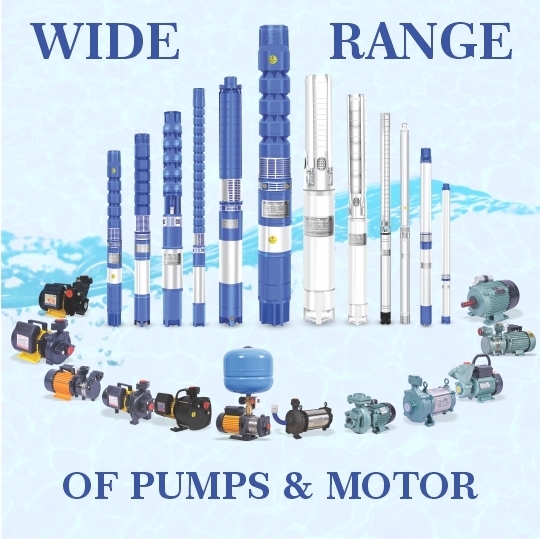Exploring Different Types of Water Pumps: A Comprehensive Guide
Introduction:
Water pumps play a crucial role in various industries and domestic settings, ensuring the efficient movement of water for various purposes. From agriculture to residential water supply, these mechanical devices have evolved over time to cater to specific needs. In this blog post, we will delve into the world of water pumps, discussing their types, applications, and advantages.
Types of Water Pumps:
Centrifugal Pumps:
Centrifugal pumps are among the most common types and are used extensively in various applications. They work on the principle of using centrifugal force to move water. The pump's impeller spins rapidly, creating a low-pressure area that draws water in, and then expels it with force. These pumps are suitable for transferring large volumes of water with moderate pressure and find applications in residential water supply, irrigation, and industrial processes.
.jpg)
Submersible Pumps:
Submersible pumps are designed to be submerged in water, typically used for deep well pumping or drainage applications. They are efficient at pushing water to the surface and are often used in domestic wells, boreholes, and sewage systems. Type Of Water Pumps are known for their quiet operation and durability, as they are protected from external elements.
Diaphragm Pumps:
Diaphragm pumps use a flexible diaphragm to displace water. They are suitable for pumping fluids with solids, making them ideal for wastewater treatment, chemical transfer, and even some medical applications. Diaphragm pumps can handle viscous fluids and are less likely to experience clogs.
Jet Pumps:
Jet pumps are commonly used for shallow wells or situations where the water source is not very deep. They operate by creating a vacuum that draws water to the surface. Jet pumps can be used for both residential and commercial purposes, including supplying water to buildings and irrigation systems.
Gear Pumps:
Gear pumps use interlocking gears to move water. They are known for their precision and ability to handle high-viscosity fluids. Gear pumps find applications in chemical processing, oil transfer, and hydraulic systems.

Peristaltic Pumps:
Peristaltic pumps use rollers to compress and release a flexible tube, pushing water through the tube. They are gentle on fluids, making them suitable for transferring delicate liquids or for medical applications like IV pumps.
Axial Flow Pumps:
Axial flow pumps are designed for high flow rates and low head applications. They move Water Pump Types making them useful for flood control, irrigation, and drainage in agricultural and construction settings.
Conclusion:
Water pumps are diverse in their types and applications, catering to a wide range of industries and needs. Understanding the different types of water pumps can help in selecting the right pump for a specific task, ensuring optimal efficiency and performance. Whether it's providing water to a home, irrigating fields, or facilitating industrial processes, the right water pump plays a vital role in ensuring the smooth flow of this precious resource.
Comments
Post a Comment